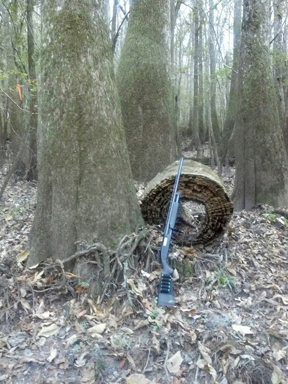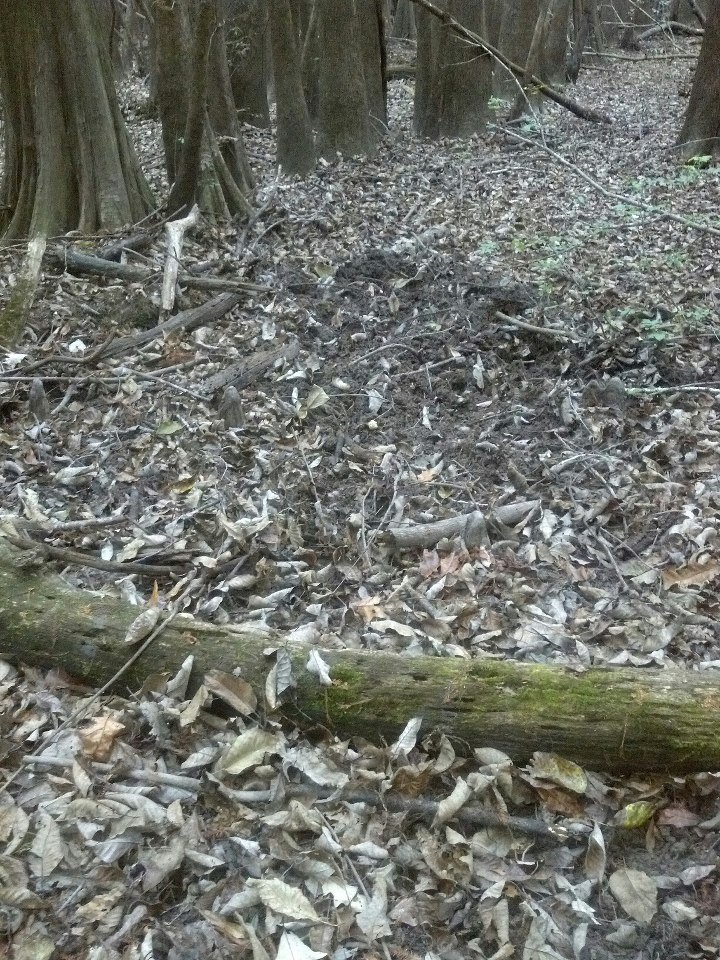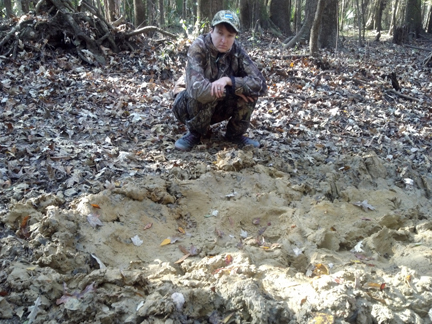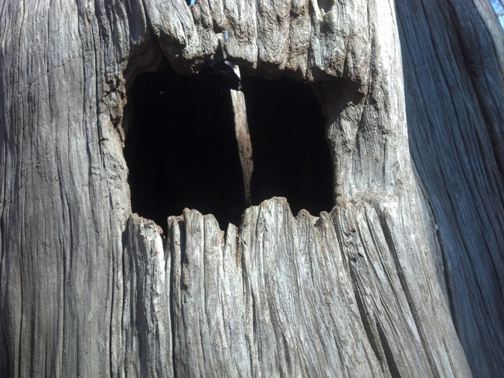
Outdoor adventurer explores the Choctawhatchee River basin
It was well past time to get back outdoors. All the usual excuses had been keeping me off the bike, or out from under my backpack. Heat, work, money, time, etc. It took an unusual set of circumstances to drive me back onto the woods.

Hog hunting in Florida is without season, if hunting on private land. In fact, there’s not too many regulations that apply to hogs, if hunting on private property. You can use any legally owned firearm, you can hunt at night, with a light. Some people have even taken to using night vision scopes that are priced more than my last three vehicles combined.
Hunting on public lands is a different story. You have to abide by the rules of each hunting season. Archery, muzzleloading, small game, general gun, each has it’s own time frame and restrictions. Then there’s different date periods within each of those seasons, that are open to hunting, depending on the public land you intend to hunt. Some are open strictly on a “Quota” basis. These are very limited time windows, open only to a select few who were lucky enough to have won a quota permit for that area, and a certain season. This prevents over use of smaller public areas.
For me, the closest available lands, that aren’t restricted by quota regulations is the Choctawhatchee River Wildlife Management Area. The Choctawhatchee River WMA consists of over 57,000 acres along more than 30 miles of the river in Bay, Holmes, Walton, and Washington counties.
There’s several access points available to the public. The ones I used most are along the stretch of county highway 81 that stretches between the community of Bruce, and ends in the town of Ponce De Leon Springs, Florida. Two of these are Tilley Landing, and Bruce Creek Landing. Unless well equipped, and well experienced, I wouldn’t recommend entering into the Tilley Landing area without someone who’s been there to act as a guide. It’s a huge stretch of land, that is pocketed with deep mud holes, winding oxbow swamps, lost lakes, and only one road that ends in the center of it. If you were to strike off into the swamp, and get turned around, you could wander for days, without finding your way out. The Bruce Creek section on the other hand, is bordered by the creek to the south, the Choctawhatchee river to the east, McCaskill Road to the north, and County Highway 81 to the west. While someone could get lost in there, it’s a much smaller area, and being able to mostly walk a straight line would get you to one of these major landmarks, which you could use to find your way back out.
The Tilley Landing area was filled with hog signs. My dear sweet wife, the “Weazel” joined me on my first hunting hike of the season. We were sure we’d see hogs everywhere, with as much evidence of their presence as we were finding.

The most common sign of hogs will be the torn up ground where they had used their snouts to dig up the topsoil in search of things to eat. This could include roots, bugs, worms, buried acorns, frogs, snakes, lizards and even crayfish. This is one of the reasons that they have just about no regulations against killing them. When a parcel of hogs make their way into a farmer’s crops, they can do substantial financial damage in a single night. Also, the damage done by hogs while searching for food along shore lines and river edges, can cause erosion and water contamination. Because the hogs can be so efficient in their work, they can prevent new plant growth from establishing itself on the forest floor. In addition to all of this, because they eat many of the same foods that deer do, there is the possibility of out competing the deer for limited food resources.
Hog wallows are another sure sign that they’ve been in the area. These muddy depressions are used for a variety of purposes. Because pigs can’t sweat, they use the evaporative properties of the mud to help cool their bodies. Also, the mud can act as a sunscreen to protect their skin. Another possible reason for covering their bodies in mud is that they can use it to help capture and remove insects and parasites. By rolling in the mud, then scraping the mud off onto trees, they’re able to pick off fleas, ticks, and other biting pests.
Hogs will often use small pine trees as their scraping posts. These can be easily identified by the caked on mud part way up the trunk and the hoof dug ground at the base of the tree. Hogs will also scrape the trees with their tusks. These scraped trees are not to be confused with the rubs of a deer. An easy way to be sure that it’s a tree that a hog has been using, instead of a deer is that deer do not like to get the pitch from pine trees on their antlers. It would cause leaves and twigs to stick, something that the deer do not seem to enjoy.
There’s been very few places where I found all of these signs of hogs in one place. Often I’ll find the rubs, but no wallow. Or plenty of wallow sites, but the trees are all clean. I might find hog poop in the area, but no other signs. The rooting seems to be the one universal piece of evidence they leave behind though.
Not all of my hunting expeditions have been focused on killing hogs. A guy has to eat, and to keep my shooting skills honed, I turned my attention to an animal that seemed to be rather abundant whenever I’m out searching for pigs, and that’s squirrels. A funny thing about squirrels. They’re every where. When you’re hunting for deer, or hogs, turkey, or rabbits, you’re constantly being scolded by those fuzzy tailed little grey tree rats. Leave the shotgun at home, and walk into the woods with a .22, and all of a sudden they all disappear. I participated in a local event called the Boar Squirrel Blast Off. It’s a simple contest. You spend the morning hunting, you bring your kills in to be counted. You can bring in up to ten entries. The contestant with the largest number of squirrels wins. Unless of course, more than one person brings in ten. Then it comes down to who has the most head shots. If that turns out to be a tie, then the ‘boar squirrel” part of the title comes into play. The contestant with the most male squirrels would then win the top prize. I and two friends entered. Between the three of us, there was one squirrel to be tallied. Not our proudest moment. We did have a great time though. Nicks’ Restaurant sponsored the event, and Redbay Grocery hosted it. We had a great day outdoors, and we were able to enjoy a delicious lunch of beef tips, gravy and rice prepared by the folks at the Redbay Grocery.
The idea of eating squirrels seems to be a little disturbing to some folks. Let me assure you, with the right recipes, you’d quickly forget where the meat came from, and you’d be holding out your plate or bowl for more.

There’s reasons to explore the river basin beyond the potential for killing dinner. There are mysteries in the swamp. One of the ones we discovered are some strange square cuts in dead trees in various locations. I know that this area once was used for turpentining. Which would involve scratching the bark off pine trees, causing the pitch to run, and be collected. In some cases holes would be carved into the tree, where this pitch would collect. The trouble with this possibility, is that the cypress trees weren’t used for this purpose. I had several theories as to what they could be for. It looked like it could have been used as a hunting blind, but the hole was too small. Also the interior of the tree was still solid, solid enough at least that no one would be able to fit inside. Maybe someone had carved the holes to hide items. In hopes of becoming rich by finding treasure left inside the trees, I tried taking pictures of the interior, since they were too tall for me to look inside myself. Needless to say, I didn’t get to quit my job.
I posed the question to a few people. Lori Ceier from Walton Outdoors suggested that they could have been carved to house recording devices in search of another mystery, the long lost Ivory Billed Woodpecker. Several groups have wandered these swamps in hopes of discovering a live example of this bird that is currently classified as extinct.
Almost as elusive as the IBW, the hogs of the area proved to be beyond my abilities to track down. I decided to try some other locations and tactics.
I enlisted the assistance of a friend. He joined me on an expedition to the Bruce Creek area. My friend, who I’ll call “Dave”, had his sights set on squirrels, but I was still after hogs. General gun season was under way, and I was finally able to put away the shotgun, and legal to carry my new AR15.
Fortunately the scenery was great, since both of us were not having any luck in our pursuit of our prey. We walked several miles, starting at the boat launch at the end of McCaskill Road, over to the Choctawhatchee river, then back along Bruce Creek until we found the Bruce Creek Landing parking area. ”Dave” had a time constraint, so we made our way cross country back to the boat launch.
We were prepared to call it a day, without anything to show for our efforts beyond a few pictures, and the memory of a enjoyable hike through the river bottoms. As we neared the parking area, we spotted a squirrel. ”Dave” took aim, and shot. And the squirrel climbed higher up the tree. ”Dave” aimed again, fired, and the squirrel fell. It might not have been enough to feed his family, but “Dave” did have enough for a skillet of fried squirrel nuggets.
Dave and I left the landing, and we met up again at the Redbay Grocery, where we had a delicious lunch. We parted ways. ”Dave” went home, and I drove on north to visit a place that the Weazel and I had explored years ago. A little place called Gum Creek Landing. Shortly after arriving at the property, I began to explore a boundary road, and came across two guys who had just harvested a large sow. I asked to watch, hoping to learn a little about how to field dress a hog. But that’s a story for another time.
Fred Provost is a resident of Santa Rosa Beach and an avid outdoorsman and adventurer. You can learn more about his adventures here.
